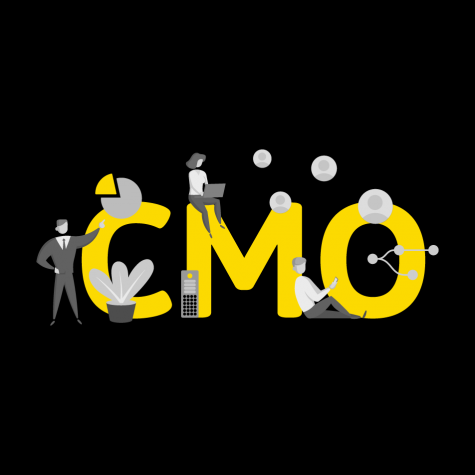We grow by sharing our experience, knowledge and expertise/

Full-stack or bust: Navigating your brand confidently into the new year with an integrated, digital-first marketing strategy
Full-stack, digital-first, marketing strategy
When was the last time you were in talks with an agency you were considering for a digital revamp and the subject of creative came up?
Don’t be shy. It happens.
In our experience, it usually happens like this.
We’ve just laid out all our capabilities—the fact that we do brand strategy, communications, full-spectrum digital marketing, media planning and buyng, UX, UI, and martech-powered websites and apps—and a CMO asks us, kind of sheepishly: “That sounds great. But do you do creative, too?”
It’s like one of those moments in a musical when the lead is supposed to burst into song. Except, we’re an agency, so we don’t burst into song all that often. We roll up our sleeves, make sure everyone is good with coffee, and sing the gospel of full-stack marketing.
Which, if you haven’t heard it, goes something like this.
Full-stack marketing: what it is
Once upon a time there were web developers who liked working on the stuff we see on our screens (front end) and the developers who liked coding the stuff under the hood (back end).
One day, we don’t know when, a developer somewhere decided that being good at both would be better. She called herself a “full-stack” developer.
The logic was: if you could offer a holistic, integrated package that covered everything a client could possibly want for their website, you’d be delivering a superior product that would make everyone happier and more productive.
Plus—and this counts a lot—from drawing board to launch, the comprehensive approach would be a lot quicker and consistent.
That developer probably also wanted to burst into song.
Instead, she told her friends in marketing.
The folks in marketing, always keen to adopt the latest tools, really liked the idea and ran with it. And before long a new breed of agency was born: the full-stack agency.
These new, hybrid agencies were the first to offer holistic, integrated, digital-first marketing strategies that covered every step of brand growth and development.
To frame this in terms of the CMO’s question?
Yes, we love creative and have a full team of creatives—graphic and UX designers, creative directors and brand strategists—who come up with brilliant ideas to spark stand-out marketing campaigns and brand revamps, just like traditional advertising agencies do.
But here’s the difference.
While traditional advertising agencies are used to developing their strategies primarily around TV and even print media—and then retro-fitting them for digital media—full-stack marketing agencies, like Base Element, were born in the forge of the web’s ever-changing, data-driven furnace.
We start with the digital experience, and then build off it. The digital experience informs every nook and cranny of the brands we work with.
Full-stack marketing: why you need it
The truth is, the CMO’s question was a very good one.
It’s the primary fear of a lot of in-house marketing teams shopping for digital expertise: that the digital transformation they want is going to be one unending logistical headache divvied out among a handful of agencies without a cohesive strategy or roadmap forward.
Because there’s no way around it. If you’re a CMO or you run a small-to-medium-sized business, at some point in your journey you’re going to go looking for help, even if it’s just for a website reboot.
That cooperation will nine times out ten reveal other holes in your brand’s armor.
Your new website with its sparkling UI might look great now, but are your ancient copy and sales brochures really reflecting the look and feel of your new branding? And what about that Facebook campaign you needed data on yesterday? Or that page loading speed audit everyone’s been telling you to take care of before Google starts penalizing you?
Ok, you’re a CMO. You certainly have the expertise to deal with some of the many, many moving parts that keep your brand running. But time to do it all, you simply don’t have that.
Including the time to manage a “team” of agencies, each delivering a piece of your brand experience. Especially if those agencies are working backwards from the old, ad agency paradigm.
Partnering with a full-stack marketing agency means you get everything in one package—the creative, the brand strategy, the communications, the UX/UI, the marketing, the deep analytics, the media planning and buying and more. And you get it built from the ground up for digital delivery.
In other words, you get all the tools and capabilities that give your business a fair shot at succeeding in the fiendishly competitive digital marketplace we’re all either sinking or swimming in.
The end result?
This is the part where we all get to sing.
Full-stack marketing: what you get
Integrated brand strategy
There’s a reason comedians in Hollywood roundtable movie scripts. It isn’t just because when very creative people are all in the same room together, they find better creative solutions.
It’s because when everyone with a stake in a project is in sync, they’re all telling the same story. This way, the final script serves a single vision, and doesn’t end up a hodgepodge of throw-away skits.
Businesses need the same kind of ground-up cohesiveness.
The only way you can get there is by partnering with a marketing team that understands your brand at every level of the funnel, from the very core of your value proposition through to every extension of how your brand looks, feels and behaves in a digitally connected world.
A team that, when something needs fixing, won’t ever have to reinvent the wheel, because they designed the wheel.
No outsourcing. No conflicting creative approaches or styles. No great ideas that only work on specific media. One team. One vision. Digital at its core.
That’s the magic of full-stack.
Cutting-edge tech
Martech is evolving as fast as your users learn to use it. And more and more businesses are turning to tech to deliver better customer experiences. If you’re not partnering with a digital agency that’s on top of the latest digital trends and is equipped to deploy them with real results, your brand is bleeding.
Whether it’s chatbots, marketing automation, AI, production of a TVC or a radio spot, voice search or the latest developments in UI, full-stack l marketers know what to implement, where to deploy it, and how to analyze the results so that you won’t only be staying afloat, but punching way above your weight.
Rapid execution
Why is it that a digital team with designers and brand strategists working in sync can plan a better Instagram campaign for you than an “Instagram specialist”?
Or a marketer who knows analytics inside out working alongside an experienced copywriter can tweak your on-page SEO better than any pure SEO expert can?
Full-stack thinking has always been not just about mastering more, but about integrating the full spectrum of marketing skills, tools and insights into one unified brand strategy.
But it’s also about something else.
When marketing teams are working in sync across marketing channels, and pooling their expertise and talents, they aren’t just delivering more thoughtful, cohesive brand experiences, they’re doing it a lot faster.
Less bloat
Of course, the more diverse and focused your team, the faster you prototype.
Full-stack agencies are simply much less bloated than a patchwork team of resources drawn from a bunch of different agencies with different working styles.
Partnering with a single, focused team that can do everything for you means you won’t have to deal with the endless churn of agency emails, meetings and missteps you’ve come to dread—ever again.
The bottom line
Vision alone never grew a business. Not even the greatest vision. Success has always been in the nitty-gritty.
And, as anyone that’s ever run a company knows, there’s always a ton of nitty-gritty.
It’s also been said that good leaders know when to bring in the right talent and where to use it.
That couldn’t be truer for your marketing strategy today.
The digital marketplace is just too competitive, changes too fast and demands too much niche expertise for most small-to-medium-sized businesses to negotiate all by themselves.
Partnering with old school marketing agencies might work for some, but the collaboration is fraught with pitfalls you’d be smart to avoid—if you want to walk away with a cohesive, digital-first marketing strategy with an extended shelf life.
And you can avoid them, and set a solid foundation for your brand growth while you’re at it. If you put your money on a full-stack marketing agency with an integrated, digital-first strategy.
And that, folks, is the gospel of full-stack marketing.




